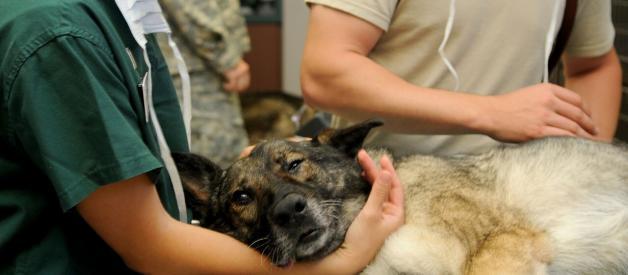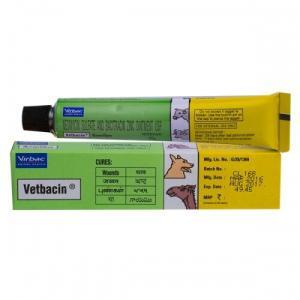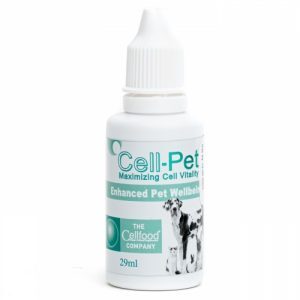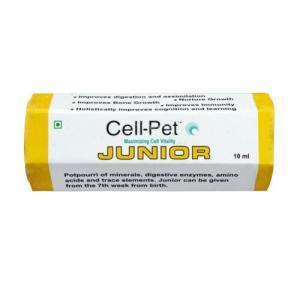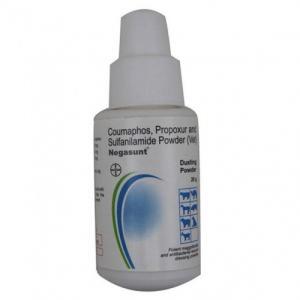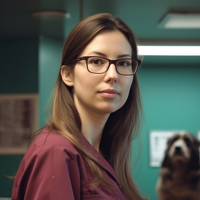Table of Contents
Pet owners should know how to treat a wound in their cat or dog because it enables them to provide timely and appropriate first aid, reducing the risk of infection and complications. This knowledge can make a difference in promoting a quicker and more comfortable recovery for their beloved pet. Additionally, it empowers pet owners to handle minor injuries efficiently, especially when immediate veterinary care is not readily accessible.
If a wound in a cat or dog is left untreated, several complications can arise. The wound may become infected, leading to more significant health issues. Untreated wounds can also take longer to heal, and in severe cases, they may even worsen, potentially causing tissue damage or systemic infections that can be life-threatening. Prompt and proper wound care is crucial to prevent these complications and ensure your pet’s quicker and safer recovery. This article explains how to treat wounds on a dog and cats and how to care for infected wounds on dogs and cats.

What Is a Wound?
A wound in a cat or dog refers to any injury that causes damage to the skin or underlying tissues. Wounds can vary in severity, ranging from minor scratches or cuts to more significant injuries, such as lacerations, punctures, or bites (wounds on a dog’s ear or dog tail wound infection). They can be caused by various factors, including accidents, fights with other animals, sharp objects, or even surgical procedures (veterinarians usually recommend how to care for dog wounds after surgery). Wounds can be open, where the skin is broken and exposed, or closed, where the damage is internal, such as bruising or tissue damage beneath the skin. Proper wound care is essential to prevent infections and promote healing in pets. If your dog has an infected wound, contact your veterinarian to learn how to treat it.
When to Take Your Dog or Cat to the Vet
You should take your dog or cat to the vet if they have wounds under the following circumstances:
- Deep or severe wounds: If the wound is large, deep, or bleeding profusely, it requires immediate veterinary attention. These wounds may need stitches or more intensive treatment to promote healing and prevent complications. For example, such wounds can happen after a dog fight, and you must know how to care for wounds.
- Puncture wounds: Bite wounds or punctures from sharp objects can be deceptive, as the visible wound might not represent the full extent of the injury. A veterinary evaluation is crucial to check for any internal damage or infection risk.
- Wounds near vital areas: If the wound is close to sensitive areas like the eyes, ears, nose, or genitals, a professional examination is necessary to ensure there’s no risk of additional damage or infection.
- Signs of infection: How to know if a wound is infected on a dog? If you notice any signs of infection, such as increased redness, swelling, warmth, or pus, or if a dog’s or cat’s wound smells, it needs immediate veterinary attention.
- Wounds not healing: How to take care of a deep wound on a dog or cat? If a wound is not showing signs of improvement within a day or two of home care, it’s best to have it checked by a vet to rule out any underlying issues hindering the healing process.
- Lethargy or changes in behavior: If your pet becomes lethargic, shows signs of pain, or experiences any changes in behavior after sustaining a wound, it could indicate a more serious problem and requires professional assessment.
- Multiple wounds: If your pet has multiple wounds, it’s best to have them evaluated by a vet to ensure no hidden injuries and receive proper treatment to learn how to care for a wound on a dog.
Remember, professional veterinary care is essential for assessing the severity of wounds and providing appropriate treatment to avoid complications and promote a swift recovery for your furry friend. Do not try to find a way how to close a deep wound without stitches on a dog at home with the help of home remedies for dog wounds.
What Should I Do If My Pet’s Wound Is Bleeding?
How to treat a dog wound on the paw? And how to stop bleeding dog wounds?
You must provide immediate first aid if your pet’s wound is bleeding. Keep yourself composed to effectively help your pet without causing further stress.
Use a clean cloth, gauze, or a clean piece of clothing to apply gentle but firm pressure directly on the wound. This will help control the bleeding. If the wound is on a limb, try to elevate it above the level of the heart. This can further assist in reducing blood flow to the injured area. Maintain steady pressure on the wound for at least 3-5 minutes to allow the blood to clot. Avoid peeking or lifting the cloth to check if the bleeding has stopped during this time.
Even if the bleeding stops, having your pet examined by a veterinarian is crucial. Internal bleeding or other complications may not be apparent immediately, and a professional evaluation is necessary to ensure proper treatment and prevent infections.
Tourniquets can do more harm than good in most cases and should only be used by trained professionals in specific situations.
Remember, while providing first aid can be helpful, it is not a substitute for proper veterinary care. Seek immediate veterinary attention for your pet to ensure the wound is appropriately treated and to prevent potential complications. Watch the veterinarian and learn how to wash a dog’s wound.
Supplies Needed for Dog Wound Care
Regarding dog wound care at home, having the right supplies on hand can significantly promote healing and prevent infections. Here are the supplies you may need:
- Gloves: Disposable gloves are essential to maintain cleanliness and prevent the transfer of bacteria from your hands to the wound.
- Clean towels or gauze: These are useful for wound cleaning and drying. Choose soft, non-stick materials to avoid further irritation.
- Antiseptic solution: How to clean an infected dog wound at home? Use a mild antiseptic solution or saline to clean the wound gently. Avoid using hydrogen peroxide or alcohol, as they can harm the tissues.
- Sterile water or saline solution: It is essential to flush and clean the wound thoroughly. You can use a syringe or a clean squirt bottle for this purpose.
- Antibiotic ointment: Over-the-counter antibiotic ointments can help prevent infection. Ensure the ointment does not contain steroids, which can slow the healing process.
- Non-stick bandages or gauze pads will help cover the wound and protect it from dirt and further contamination.
- Adhesive tape or self-adhesive bandages: Use these to secure the bandage in place, but be cautious not to apply them too tightly.
- Elizabethan collar (E-collar): This is useful to prevent your dog from licking or biting the wound, which can delay healing.
- Pet-friendly scissors: Keep these on hand to cut bandages or gauze to the appropriate size.
- Tweezers: These may help remove small debris or dirt from the wound (only if it can be done without causing further damage). This is how you can clean a deep wound on a dog and cat.
- Penlight or flashlight: Good lighting is crucial for proper wound examination and care.
While basic wound care can be done at home for minor injuries, always consult a veterinarian for more severe wounds, or if you are unsure about the proper care, ask how to treat small wounds on dogs and cats.

Tips on How to Clean and Treat Your Cat’s or Dog’s Wound at Home
How to heal a dog or cat wound fast at home?
Cleaning and treating your cat’s or dog’s wound at home can be helpful for minor injuries. Here are some tips to follow.
Clean the Wound after You Stopped Bleeding
How to disinfect a dog bite wound? Or how to sterilize a dog wound?
As mentioned earlier, apply gentle but firm pressure to stop the bleeding. Once the bleeding has stopped, carefully clean the wound using a mild antiseptic solution or sterile saline to remove dirt and debris. Avoid using harsh chemicals like hydrogen peroxide or alcohol, as they can damage the tissues.
Remove Foreign Objects With Tweezers
If you can see any visible foreign objects, such as small splinters or debris, use clean tweezers to remove them carefully. Make sure not to dig deeply into the wound or cause further damage.
Disinfect the Wound
After cleaning the wound, apply a thin layer of over-the-counter topical antibiotic ointment to help prevent infection. Be sure to use an ointment that is safe for pets and does not contain steroids.
Cover Up the Wound With a Bandage
Covering minor and superficial wounds with a non-stick bandage or gauze pad can help protect the area from further contamination. Secure the bandage with adhesive tape, but avoid wrapping it too tightly.
Use an E-collar If Needed
To prevent your pet from licking or biting the wound, especially if it’s challenging to keep them away from it, use an Elizabethan collar (E-collar). This will protect the wound and promote better healing.
These tips are suitable for minor wounds and injuries. If the wound is deep, large, or shows signs of infection, or your pet’s behavior or health deteriorates, seek veterinary attention immediately. They will tell how to care for a deep wound on a dog or cat.
Wound Medication Care in Dogs and Cats
What medicine to use on dog wounds?
Wound medication care in dogs and cats is essential because it helps prevent infection and promotes proper healing. Proper wound care can also reduce the risk of complications and discomfort for the animal, ensuring a quicker and more comfortable recovery. Our team suggests the following products.
Vetbacin (Bacitracin Zinc, Neomycin Sulphate), 20g
Vetbacin (Bacitracin Zinc, Neomycin Sulphate) is a topical medication commonly used for wound care in dogs and cats. Vetbacin treats minor skin wounds, cuts, and scratches in dogs and cats. It effectively prevents and treats bacterial infections that may occur in these types of wounds.
Active ingredients
Vetbacin contains two active ingredients – Bacitracin Zinc and Neomycin Sulphate. Bacitracin Zinc is an antibiotic that helps prevent bacterial growth, and Neomycin Sulphate is another antibiotic that targets a broad range of bacteria.
How to use it
Before applying Vetbacin, clean the wound gently with mild antiseptic soap and warm water. Pat the area dry with a clean towel. Then, apply a thin layer of Vetbacin directly to the wound, covering the entire affected area.
Benefits
Vetbacin’s combination of Bacitracin Zinc and Neomycin Sulphate provides a potent and effective barrier against various bacterial infections. It helps create an environment conducive to proper wound healing, reducing the risk of complications and promoting a quicker recovery.
Cell-Pet Enhanced (Oxygen, Minerals, Enzymes And Amino Acids), 10 ml
Cell Pet Enhanced Pet Well-Being is a liquid concentrate containing colloidal minerals and nutritional supplements. It is recommended to be added to your pet’s daily drinking water. This product aims to boost vitality and energy, alleviate itching and hair loss, aid in healing wounds and skin issues, reduce the frequency of seizures, and improve the texture and shine of the coat.
Active Ingredients
- Oxygen: Adequate oxygen supply to the skin cells is essential for maintaining their health and function. Oxygen promotes cellular metabolism and can aid in repairing and regenerating damaged skin tissues.
- Minerals: Minerals like zinc, selenium, and others are crucial for various enzymatic reactions in the skin cells. They contribute to maintaining the skin’s barrier function, regulating oil production, and supporting the immune response.
- Enzymes: Enzymes are biological catalysts that facilitate essential processes in the skin, such as cellular turnover and wound healing. They can help in the removal of dead skin cells and encourage the growth of healthy ones.
- Amino Acids: Amino acids are the building blocks of proteins vital for skin health. They are involved in collagen and elastin synthesis, which provides structure and elasticity to the skin. Amino acids also play a role in forming the skin’s protective barrier.
How to Take
Administering this product is easy; mix it with your pet’s drinking water, and your pet will readily consume it.
Benefits
By incorporating these active ingredients into a pet’s diet or through topical application, you can help support their overall health and skin appearance and help treat wounds.
Cell-Pet Junior (Oxygen, Minerals, Enzymes, Amino Acids), 10 ml
Junior Cell Pet Supplement for Pets is a must-have product for puppies. In colloidal form, this liquid oxygen mineral supplement boasts a remarkable 95% absorption rate directly into the bloodstream without any side effects. The magical blend combines essential minerals, metabolic enzymes, and amino acids. Witness an enhanced coat luster and improved digestion with the extra oxygen. This supplement reduces lethargy and distress and bolsters the immune system, guarding against diseases. With fast and effective results, it also helps in wound treatment and bone development, making it incredibly beneficial and easy to use.
Active Ingredients
- Oxygen: Adequate oxygen supply is crucial for a puppy’s developing body and overall health. Oxygen is involved in cellular metabolism, providing energy for growth, tissue repair, and various physiological functions. Sufficient oxygen levels support the puppy’s vitality and promote proper organ development.
- Minerals: Minerals play a pivotal role in developing a puppy’s skeletal system, teeth, and overall growth. Essential minerals like calcium, phosphorus, zinc, and iron are necessary for healthy bone formation, muscle function, and proper immune system support.
- Enzymes: Enzymes are essential for digestion and nutrient absorption in puppies. They help break down food into smaller molecules, making it easier for the body to extract nutrients. Enzymes also aid in cellular repair and support a healthy digestive system.
- Amino Acids: Amino acids are the building blocks of proteins critical for a puppy’s muscle and tissue development. They contribute to healthy skin, coat, and proper immune function. Certain amino acids are considered essential, meaning they must be obtained through diet since a puppy’s body cannot synthesize them on its own.
How to Take
Administering this supplement is a breeze – mix it with your pet’s drinking water, and they’ll readily take it.
Benefits
Incorporating these elements into a puppy’s diet or using appropriate supplements can provide the necessary building blocks for their growth and development.
Negasunt (Coumaphos + Propoxur + Sulfanilamide), 3% + 2% + 5%, 20g
Bayer Negasunt Powder 20g is a specialized veterinary dusting powder designed for convenient application as an antibacterial wound dressing. Veterinarians prescribe it to treat various conditions, including maggoted wounds (dogs with maggots in wounds), foot lesions of FMD, surgical wounds, accidental wounds, or navel infections.
Active Ingredients
The active ingredients, Coumaphos and Propoxur, act as direct inhibitors of acetylcholinesterase (AChE), an enzyme that breaks down the neurotransmitter acetylcholine. By inhibiting AChE, acetylcholine accumulates in the synaptic cleft, leading to continuous stimulation of cholinergic receptors in parasites’ central and peripheral nervous systems. This overstimulation disrupts regular body movements, causing paralysis and eventual death of the parasites. On the other hand, Sulfanilamide is a competitive inhibitor of the bacterial enzyme dihydropteroate synthetase, which is essential for synthesizing folic acid using para-aminobenzoic acid (PABA). Without this enzyme, bacterial replication becomes impossible.
How to Use
Bayer Negasunt Powder 20g is for topical use only. Sprinkle the powder directly on the wound, covering the entire affected area twice daily until the wound heals.
Benefits
Bayer Negasunt Powder 20g is a valuable tool in treating various wounds and infections in animals, effectively targeting parasites and bacteria to promote healing and recovery. As with any medication, it should only be used as a veterinarian prescribes.
FAQ
Why Do Dogs and Cats Smell and Lick Wounds?
Dogs and cats have an instinct to lick and smell their wounds. It is believed that licking wounds helps to clean the area and stimulate blood flow, which may aid in the healing process. Additionally, their saliva contains some antibacterial properties that could protect against infection. However, excessive licking can be counterproductive and may delay healing or lead to further complications.
How to Get a Pet to Stop Licking and Scratching Their Wound?
To prevent pets from licking or scratching their wounds excessively, use an Elizabethan collar (E-collar), also known as a “cone,” to create a physical barrier. Alternatively, you can use bitter-tasting sprays or bandages to deter them from accessing the wound.
How to Keep Flies Away from Dogs Wound?
To keep flies away from a dog’s wound, use a pet-safe wound dressing that creates a barrier against flies. You can also use fly repellents or fly screens to protect the wound area.
How Do You Know If a Pet Wound Is Healing?
Signs of a healing pet wound include reduced redness and swelling, the formation of a scab or crust over the wound, and less discharge or pus. As the wound heals, it should appear less painful, and the pet may show less interest in licking or scratching it.
How Long Does It Take for a Deep Wound to Heal on a Pet?
The time it takes for a deep wound to heal on a pet can vary depending on its size, location, and overall health. Generally, it may take several days to several weeks for a deep wound to heal completely.
Should You Bandage an Open Wound on a Pet?
How to care for an open wound on a cat or dog? Bandaging an open wound on a pet can be beneficial, especially for more minor wounds. It helps protect the wound from dirt and bacteria and can promote faster healing. However, seeking veterinary attention for proper care for more significant or deeper wounds is best.
What Can Cause a Puncture Wound on a Dog or Cat?
Puncture wounds in dogs and cats can be caused by sharp objects such as nails, teeth, or other pointed items. These wounds are deeper and can be more challenging to spot, increasing the risk of infection.
Does Dog Saliva Heal Their Wounds?
Dog saliva does contain some antibacterial properties that may offer minimal protection against infection. However, it is not a reliable method for wound healing and can even introduce additional bacteria to the wound if licked excessively. Proper wound care and veterinary attention are essential for effective healing.
Olivia Bennet is a veterinarian who has worked in a veterinary clinic for many years. She specializes in the diagnosis, disease prevention, and treatment of not only cute kittens and puppies but also large farm animals. Olivia loves animals, cares about them, and wants to help you know more about your pets.

